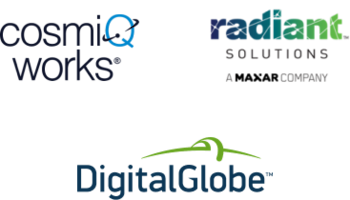
SpaceNet
Creating Next-Gen Geospatial Computer Vision Algorithms

SpaceNet
Creating Next-Gen Geospatial Computer Vision Algorithms
The Challenge
The commercialization of the geospatial industry has led to an explosive amount of data being collected to characterize our changing planet. And the application of computer vision and deep learning to extract information from this data has the potential to transform how we map roads and respond to natural disasters. CosmiQ Works, Digital Globe and Radiant Solutions challenged the Topcoder community with developing automated methods for extracting road networks from high-resolution satellite imagery. Tho goal: use Spacenet data to find a solution to help create more accurate maps, more rapidly.

04
Algorithm Challenges Executed; More Planned
50–150
Competitors Per Challenge
1259
Combined Number of Submissions for the Series
The Solution
Through a series of increasingly complex challenges with the Topcoder community, Spacenet was able to explore an enormous array of methods far exceeding the capacity of their 4-person research team. Each challenge saw between 50 to 150 participants, with competitors trying different algorithms and machine learning solutions to figure out what worked best. At the end of each challenge, Spacenet’s small research team received code for the winning solutions and used it to see what worked, what didn’t, and what could be improved.
The Impact
Algorithms that can accelerate mapping have enormous value in the areas of humanitarian and disaster response. Mapping road networks during the response to recent flooding in Bangladesh and Hurricane Maria in Puerto Rico was vital to the distribution of aid and assessment of damage. In Puerto Rico, it took 5,000 computer mappers over 2 months to fully and accurately assess the damage through traditional manual mapping techniques. The ability to accelerate this process and respond to changing conditions more quickly has the potential to save lives. Topcoder’s solutions are on the front line.
“The depth, breadth and quality of the responses we’ve received have been really impactful. Both corporations and research institutions have used the code that we’ve open sourced from these challenges... for us that’s a huge sign of success.”
Ryan Lewis, Senior Vice President, In-Q-Tel Cosmiq Works
“By using this incremental approach we’ve been able to get at new questions that no one’s ever looked at.”
Nick Weir, Data Scientist at CosmiQ Works
“By using this incremental approach we’ve been able to get at new questions that no one’s ever looked at.”
Nick Weir, Data Scientist at CosmiQ Works